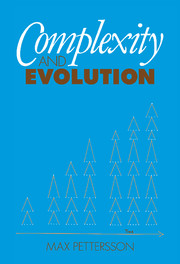Book contents
- Frontmatter
- Contents
- Foreword by Joseph Needham, FRS
- Preface
- Acknowledgements
- 1 Natural and other hierarchies
- 2 Major integrative levels
- 3 Some logarithmic forms of display
- 4 Physical range of integrated natural entities
- 5 Biological range of integrated natural entities (first part)
- 6 Biological range of integrated natural entities (second part)
- 7 Social range of integrated natural entities
- 8 Human societies (first part)
- 9 Human societies (second part)
- 10 Acceleration in evolution
- 11 Further allied accelerations
- 12 Aspects of number
- 13 Aspects of mass
- 14 Positive skewness
- 15 Quantitative conclusions
- Bibliography
- Index
7 - Social range of integrated natural entities
Published online by Cambridge University Press: 18 January 2010
- Frontmatter
- Contents
- Foreword by Joseph Needham, FRS
- Preface
- Acknowledgements
- 1 Natural and other hierarchies
- 2 Major integrative levels
- 3 Some logarithmic forms of display
- 4 Physical range of integrated natural entities
- 5 Biological range of integrated natural entities (first part)
- 6 Biological range of integrated natural entities (second part)
- 7 Social range of integrated natural entities
- 8 Human societies (first part)
- 9 Human societies (second part)
- 10 Acceleration in evolution
- 11 Further allied accelerations
- 12 Aspects of number
- 13 Aspects of mass
- 14 Positive skewness
- 15 Quantitative conclusions
- Bibliography
- Index
Summary
Introduction
We have discussed in some detail the integrated natural entities of Levels 1, 2 and 3, in the physical range; and those of Levels 4, 5 and 6 in the biological range. So we now come to the social range: there are the one-mother family societies at Level 7, the multifamily societies at Level 8, and the societies of sovereign states at Level 9 (Fig. 7.1).
The zoological species with which this chapter is primarily concerned are those where the adult actively aids the young after hatching or birth. These species can be regarded as truly social species. However, the words social and society can be used with many different meanings. Some biologists may regard a group of plants growing together, and of the same species as constituting a society. The word actively, as used above, implies the use of respirational energy.
According to the evidence of fossils and isotopic dating, the first animals where the adult actively aided the young, after hatching or birth, were the early mammals. These lived about 200 million years ago. Similar societies of birds appeared about 150 million years ago. And the earliest social insect, found only recently, dates from about 100 million years ago.
There have been fascinating recent studies of the social behaviour of, for example, chimpanzees, orang-utans, baboons and other primates, of lions, tigers, wild dogs, seals, elephants, herring gulls, jackdaws and rooks, of certain fish and of bees, ants and termites.
Information
- Type
- Chapter
- Information
- Complexity and Evolution , pp. 61 - 68Publisher: Cambridge University PressPrint publication year: 1996
